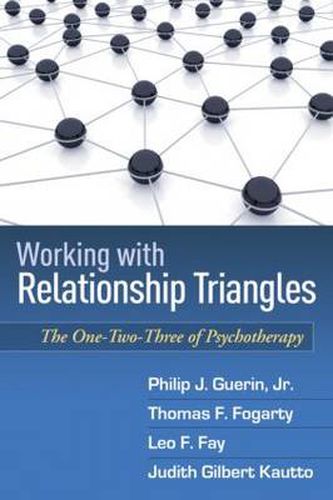Readings Newsletter
Become a Readings Member to make your shopping experience even easier.
Sign in or sign up for free!
You’re not far away from qualifying for FREE standard shipping within Australia
You’ve qualified for FREE standard shipping within Australia
The cart is loading…






Virtually all significant relationships are shadowed by a third party - another person, a competing distraction, or even a memory. This groundbreaking book provides clinicians with a hands-on guide to working with many different kinds of relationship triangles in therapy with families, couples, and individuals. The authors show why triangles come into being, how to predict their evolving nature, and how they can be dealt with and resolved in treatment. A wealth of clinical case material and treatment suggestions illustrates how thinking in terms of threes, as well as individuals and dyads, can greatly increase therapeutic flexibility and effectiveness. The paperback edition includes a new series editor’s note by Michael P. Nichols. The book will be of use to therapists from a range of backgrounds working with families, couples, and individuals, as well as students of psychotherapy and counseling. It will also serve as a text for courses and training programs in individual, couple, and family therapy.
$9.00 standard shipping within Australia
FREE standard shipping within Australia for orders over $100.00
Express & International shipping calculated at checkout
Virtually all significant relationships are shadowed by a third party - another person, a competing distraction, or even a memory. This groundbreaking book provides clinicians with a hands-on guide to working with many different kinds of relationship triangles in therapy with families, couples, and individuals. The authors show why triangles come into being, how to predict their evolving nature, and how they can be dealt with and resolved in treatment. A wealth of clinical case material and treatment suggestions illustrates how thinking in terms of threes, as well as individuals and dyads, can greatly increase therapeutic flexibility and effectiveness. The paperback edition includes a new series editor’s note by Michael P. Nichols. The book will be of use to therapists from a range of backgrounds working with families, couples, and individuals, as well as students of psychotherapy and counseling. It will also serve as a text for courses and training programs in individual, couple, and family therapy.